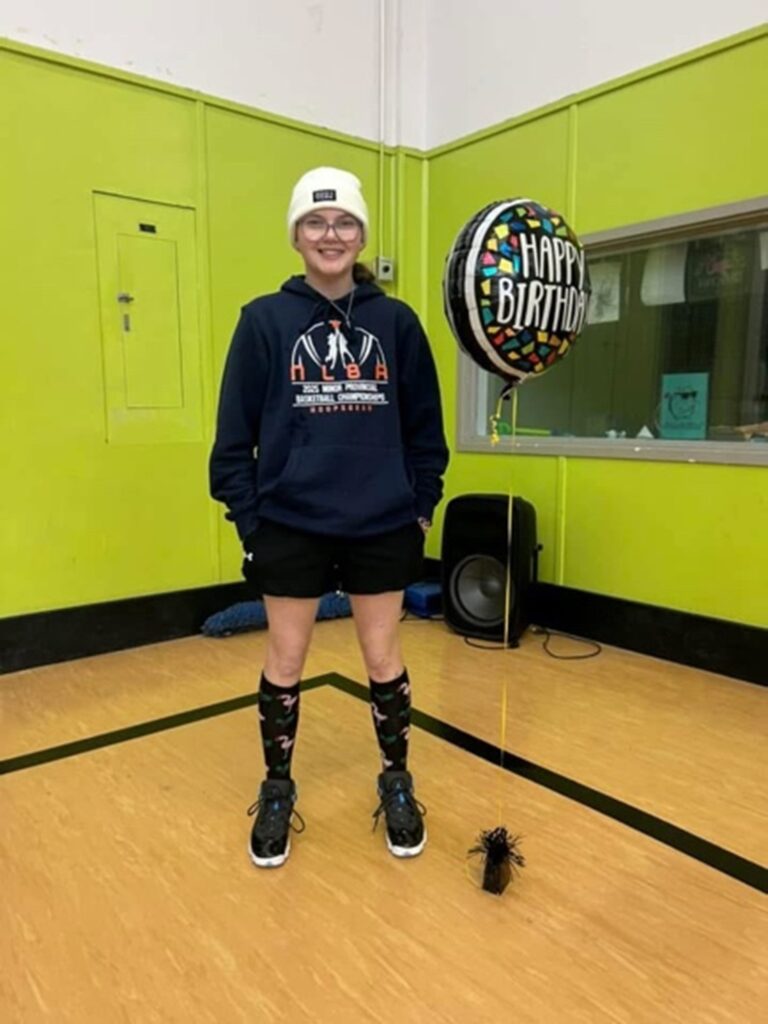It feels like yesterday that I was walking the hallways of Leo Burke Academy in Bishop’s Falls. It was my first year trying out for a school sports team — the junior high basketball team. I was in grade seven at the time, one of the youngest on the roster. I loved the sport and hoped for nothing more than an opportunity to prove my skills and be part of the team. When the list of successful players was posted on the bulletin board, I scanned the sheet nervously until I spotted my name. I was overwhelmed with gratitude but also with hesitation. Coming from a small town, I knew the other players, but this was my first time playing competitive basketball. I wondered if I would be welcomed, how I would connect with my teammates, and whether I would truly belong.
Fortunately, our first practice that week set the tone. I’ll never forget our coach saying: “Once we step into this gym, we are one team. We win together, lose together, and support each other no matter what.” That simple message created a culture of belonging and camaraderie that shaped our entire season.
Becoming a Teacher and Coach
After high school, I attended Memorial University to pursue my dream of becoming a primary physical education teacher. In 2009, that dream became reality. Since then, I have taught physical education to students across grade levels and coached numerous school teams. What I’ve learned through both teaching and coaching is this: when you take time to create a safe, supportive environment, participation and engagement increase. When athletes feel a sense of belonging and acceptance, the atmosphere becomes more positive — and the team achieves greater success both on and off the court.
Ice Breakers I’ve Used in Teaching and Coaching
1. Circle Questions: Students sit in a circle and answer a simple “either/or” question (e.g., “Would you rather eat hamburgers or hot dogs?”). They can answer verbally or hold up one or two fingers to indicate their choice. Participation usually grows as students realize it’s a safe, fun space.
2. Game Adaptations: I combine traditional games with sports skills to make learning fun. For example, Musical Chairs Basketball: athletes sit in chairs, dribble to a net when the music stops, shoot until successful, then return to find a chair. If left without one, they can DJ, remove a chair, or practice on the side.
3. Social-Emotional Learning: Early in the year, I set aside time to talk about emotions and coping strategies. We practice breathing exercises, calming techniques, and discuss appropriate responses to feelings. This builds empathy, self-awareness, and a safe classroom culture.
Building Camaraderie in Classes and Teams
4. Positive Qualities Activity: Each athlete writes their name on a paper. Classmates add qualities they admire (e.g., “respectful,” “hard-working”). These are displayed, then taken home as reminders that they are valued beyond athletics.
5. Team Symbols: Athletes make bracelets, decorate sneakers, or use team colors to symbolize unity. This tangible reminder lasts the season and strengthens identity.



6. Watch Parties: We host gatherings for major sporting events. For example, in 2025, we held a watch party for the inaugural year of female baseball in the Canada Games. Sharing moments like this inspires athletes and builds excitement for their own sport.
7. Effort-Based Awards: Each season, we give Heart & Hustle Awards to recognize effort, teamwork, and resilience. Every athlete has the chance to be validated for their contributions, reminding them that effort matters as much as talent.

8. Kindness & Role Model Awards: Recently, I introduced the King/Queen of Kindness Award for athletes who show empathy, respect, and compassion. We also use a Role Model Award for athletes who embody qualities of a global citizen — thanking referees, helping teammates, respecting the gym space, and showing kindness daily.
9. Theme Nights & Celebrations: Simple traditions like “Hat Night” or “Team Color Night” create fun memories. We also celebrate birthdays with a balloon and a song, making each athlete feel special and valued.
Reflection
Over 16 years of teaching, I’ve seen the growing importance of validating students’ emotions, acknowledging their personal challenges, and ensuring they feel safe and connected in the gym. Many of these activities require little time or cost, yet they significantly strengthen relationships between students, teachers, and teammates. That once-nervous grade seven girl — unsure how her teammates would accept her — grew into a teacher and coach who dedicates her career to ensuring every student and athlete feels as welcomed as she did in that first practice. Because that atmosphere didn’t just shape a season — it shaped the person I became.





